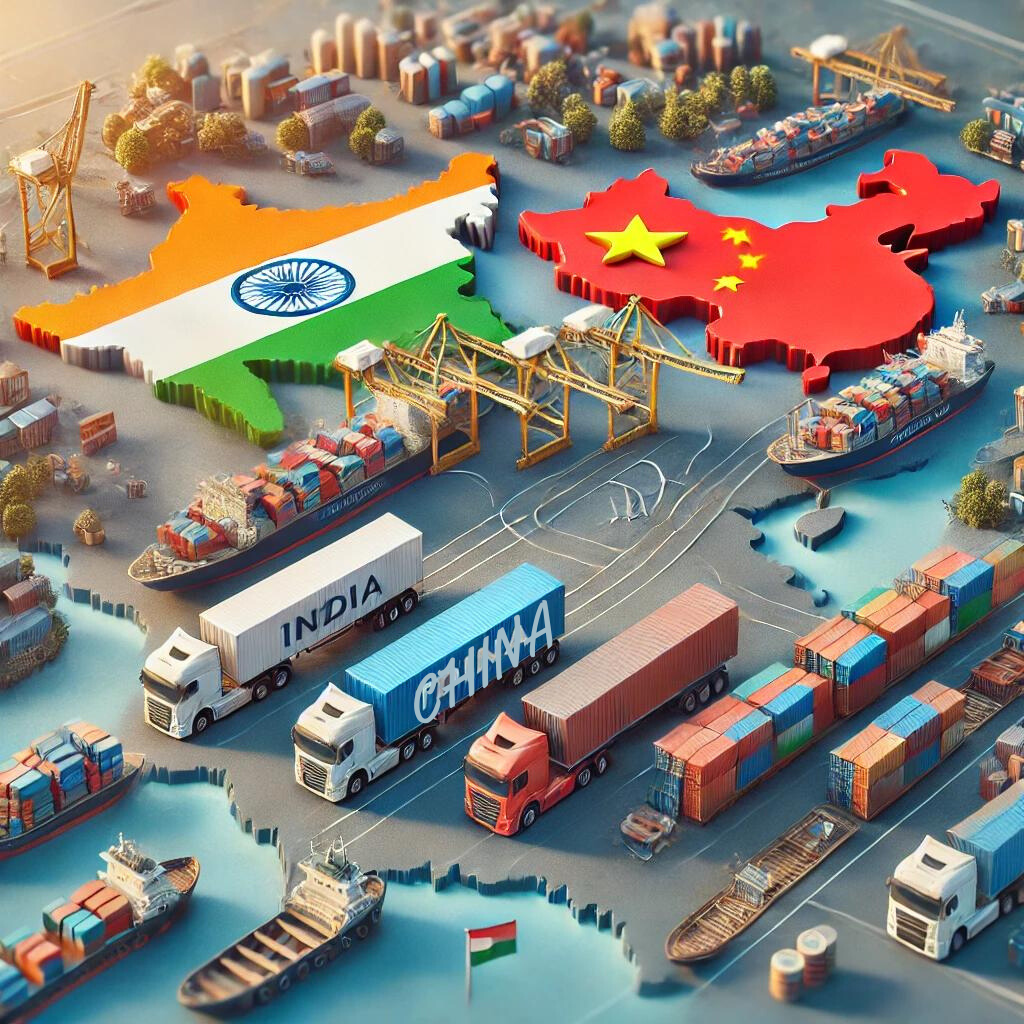Neighboring countries of India play a crucial role in shaping its foreign policy, economic ties, and regional security dynamics. With its rich history and diverse culture, India shares its borders with several countries, making its geopolitical landscape both complex and strategically significant. These neighboring nations, each with its unique relationship with India, contribute to the broader South Asian context, where cooperation, competition, and conflict coexist. Understanding India’s neighbors is essential for comprehending the region’s geopolitical intricacies and India’s role on the global stage.
- India shares its borders with Pakistan, China, Nepal, Bhutan, Bangladesh, Myanmar, and Afghanistan, each with distinct geopolitical ties.
- The length and nature of India’s borders with these countries impact trade, security, and regional cooperation in South Asia.
- Cultural, historical, and economic links between India and its neighbors have shaped mutual relations over centuries, influencing modern diplomacy.
| GS Paper | General Studies Paper II, General Studies Paper III |
| Topics for UPSC Prelims | Names and locations of India’s neighboring countries, India’s borders and boundary lines, Key facts about neighboring countries |
| Topics for UPSC Mains | India’s foreign policy with neighboring countries, Border disputes and issues, Economic and trade relations, and Strategic importance of neighboring countries. |

Geographical Overview of India’s Neighbors
India is strategically located in South Asia, sharing its borders with seven countries: Pakistan, China, Nepal, Bhutan, Bangladesh, Myanmar, and Afghanistan. These countries form the list of neighboring countries in India, each contributing to the region’s diverse cultural and political landscape.
Pakistan
India’s western neighbor, Pakistan, shares a long and contentious border with India, particularly in the region of Jammu and Kashmir. The relationship between the two countries has been marked by conflict, particularly over the Kashmir issue, but there have also been efforts towards peace and reconciliation.
China
To the north and northeast, India shares a border with China, the world’s most populous country. The India-China border is one of the longest in the world and has been the site of several conflicts, including the 1962 Sino-Indian War. Despite these tensions, China remains one of India’s largest trading partners.
Nepal
Nepal, located to the north of India, shares deep cultural and historical ties with India. The open border between the two countries allows for free movement of people and goods, reflecting the close relationship between the two nations.
Bhutan
Bhutan, a small Himalayan kingdom to India’s northeast, has a special relationship with India, characterized by mutual trust and cooperation. India plays a significant role in Bhutan’s economic development and defense.
Bangladesh
To the east, India shares a border with Bangladesh, a country with which it has strong historical ties, particularly related to the Bangladesh Liberation War of 1971. The relationship between India and Bangladesh is characterized by close economic cooperation and cultural exchanges.
Myanmar
Myanmar, located to the southeast of India, shares a long border with India’s northeastern states. The relationship between the two countries is marked by trade, cultural exchanges, and security cooperation, particularly in managing cross-border insurgency and drug trafficking.
Afghanistan
Although India and Afghanistan do not share a direct land border, Afghanistan is considered one of India’s neighbors due to the historical and cultural ties that connect the two countries. India has played a significant role in Afghanistan’s reconstruction and development in recent years.
List of Neighbouring countries of India
| Bordering Country | Length of the Common Border (in km) | No. of Indian States Having Common Borders | Indian States/UTs Having Common Borders |
|---|---|---|---|
| Pakistan | 3323 | 4 | Jammu & Kashmir, Punjab, Rajasthan, Gujarat |
| China | 3488 | 5 | Ladakh, Himachal Pradesh, Uttarakhand, Sikkim, Arunachal Pradesh |
| Nepal | 1751 | 5 | Bihar, Uttarakhand, Uttar Pradesh, Sikkim, West Bengal |
| Bhutan | 699 | 4 | Sikkim, Arunachal Pradesh, West Bengal, Assam |
| Bangladesh | 4096 | 5 | West Bengal, Assam, Meghalaya, Tripura, Mizoram |
| Myanmar | 1643 | 4 | Arunachal Pradesh, Nagaland, Manipur, Mizoram |
| Afghanistan | 106 | 1 | Ladakh |

Economic and Strategic Relationships
Cultural and historical ties shape India’s relationships with its neighboring countries, while economic and strategic interests also build these relationships. Trade, investment, and security cooperation are key aspects of India’s interactions with its neighbors.
- Pakistan: Political tensions have limited the economic relationship between India and Pakistan. However, there have been efforts to enhance trade and economic cooperation. Particularly through initiatives such as the South Asian Association for Regional Cooperation (SAARC).
- China: China is one of India’s largest trading partners, with significant trade in goods and services. However, the economic relationship is also marked by strategic competition, particularly in the areas of technology and infrastructure development.
- Nepal: India is Nepal’s largest trading partner and a major source of investment. The two countries have signed several agreements to enhance trade and economic cooperation, including the India-Nepal Trade and Transit Treaty.
- Bhutan: India plays a significant role in Bhutan’s economic development, particularly in the areas of hydropower and infrastructure. The two countries have a close economic relationship, with India being Bhutan’s largest trading partner.
- Bangladesh: India and Bangladesh have a strong economic relationship, with significant trade in goods and services. The two countries have also cooperated on energy projects, infrastructure development, and cross-border connectivity.
- Myanmar: Trade, investment, and infrastructure development focus India’s economic relationship with Myanmar. The two countries have cooperated on several projects, including the India-Myanmar-Thailand Trilateral Highway and the Kaladan Multi-Modal Transit Transport Project.
- Afghanistan: India has played a significant role in its reconstruction and development. Particularly in the areas of infrastructure, education, and healthcare. The two countries have also cooperated on security issues, particularly in countering terrorism and promoting regional stability.

Conclusion
The neighboring countries of India play a crucial role in shaping the country’s foreign policy, and economic relationships. From the complex relationship with Pakistan to the strategic partnership with China, India’s interactions with its neighbors are marked by a combination of cooperation, and competition. Understanding these relationships is essential. For comprehending the broader geopolitical landscape of South Asia and India’s role on the global stage. As India continues to grow in influence, its relationships with its neighbors will remain a key factor in determining its success in promoting regional stability.
| Neighboring Countries of India UPSC Notes |
| 1. India shares its borders with seven countries: Pakistan, China, Nepal, Bhutan, Bangladesh, Myanmar, and Afghanistan. 2. The length and nature of India’s borders with these neighbors influence trade, security, and regional cooperation. 3. India’s relationship with Pakistan is marked by conflict, particularly over the Kashmir issue, but also efforts at reconciliation. 4. China is one of India’s largest trading partners, though relations are strained by border disputes and strategic competition. 5. Nepal and Bhutan share deep cultural and historical ties with India, with open borders allowing for the free movement of people and goods. 6. Bangladesh and India have strong historical ties and cooperate closely on economic, cultural, and security matters. 7. Myanmar is a key partner for India in trade, infrastructure development, and security cooperation, particularly in the northeast. 8. Regional organizations like SAARC and BIMSTEC play crucial roles in fostering cooperation and addressing challenges among India and its neighbors. |



